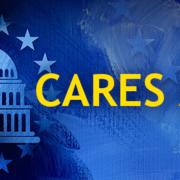Adjust your expectations of business interruption coverage
A natural place to turn when disaster strikes is insurance. The very reason you pay premiums and deal with the paperwork is to have these risk management policies in place when necessary. But, when it comes to business interruption coverage, you may have to adjust your expectations if you intend to file a claim because of the novel coronavirus (COVID-19) pandemic.
Differing views
Business interruption insurance generally provides cash flow to cover revenues lost and expenses incurred while normal operations are suspended because of an applicable event. So, many business owners are now asking an unavoidable question: Is the COVID-19 pandemic an applicable event?
Many insurers are saying no, claiming the “force majeure” legal defense. This refers to situations in which unexpected external circumstances prevent a party to a contract — in this case, the insurance company — from meeting its obligations.
Insurers are also citing policy language that stipulates coverage applies only when a policyholder suffers a loss of income as a result of physical loss or damage to covered property. COVID-19 doesn’t qualify as a physical loss, they argue. In addition, insurers contend their policies don’t cover loss of income because of market conditions or an economic slowdown.
Lawsuits have already been filed challenging the insurance companies. Attorneys, representing business owners, are arguing that the recent rise of SARS, MERS and the Avian flu have given insurance companies ample opportunity to anticipate a global pandemic.
Attorneys have additionally pointed out that the virus can attach itself to physical surfaces. Thus, they contend, it does result in a physical loss as businesses are losing revenue and incurring expenses for disinfection and prevention.
Preparatory steps
As these lawsuits play out, you may wonder whether it’s worth your time to file a business interruption claim related to the pandemic. The answer depends on your policy’s language, as well as the facts and circumstances of your company’s situation.
To decide whether and how to proceed, review your policy carefully. Look at the type of losses covered, as well as exclusions and limitations. You may want to consult an attorney, as insurance policy language and structure can be confusing.
If you decide to move ahead with a claim, you’ll need to document the adverse financial impact of the pandemic, including:
- Loss of income, as defined under your policy,
- Customer attrition rates, and
- Incremental expenses incurred, such as site security or cleaning services.
Many policies require policyholders to notify the insurer of a loss within a certain period, so you may need to move quickly.
No easier
Even before the COVID-19 crisis, receiving a payout for a business interruption claim was typically not a cut-and-dried affair. Suffice to say, doing so hasn’t gotten any easier. We can help you assess and document financial losses and expenses before deciding whether to file a claim.
© 2020












